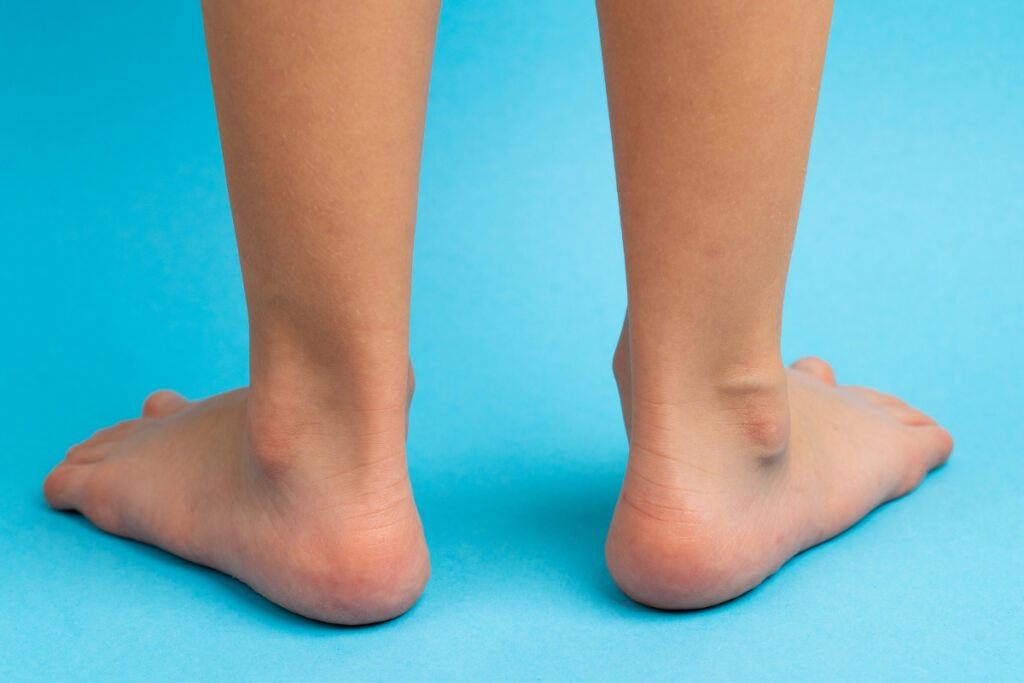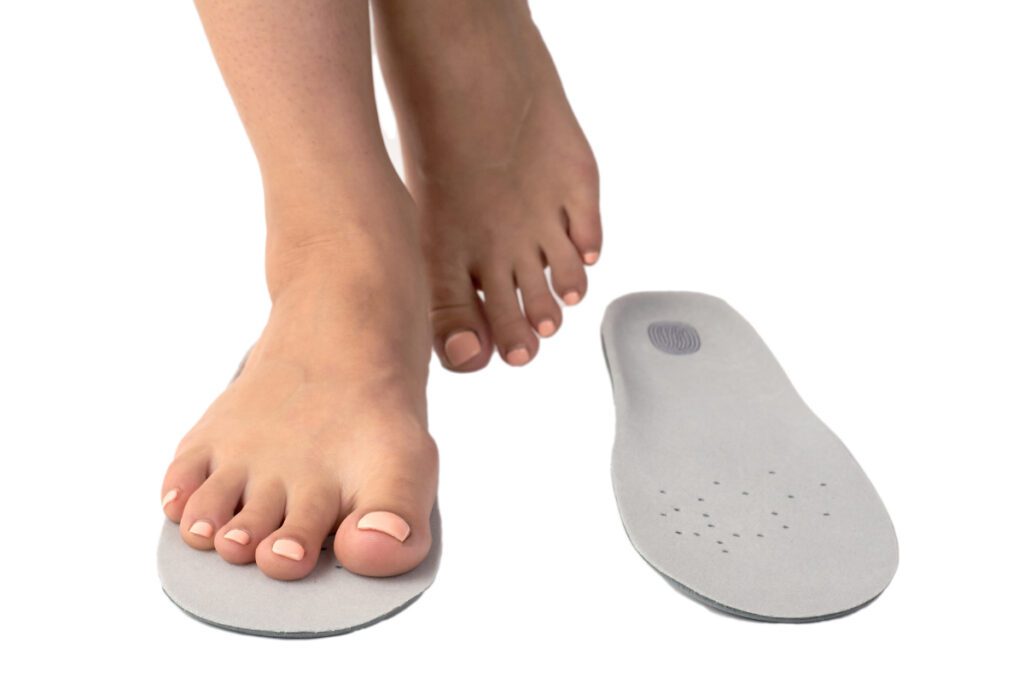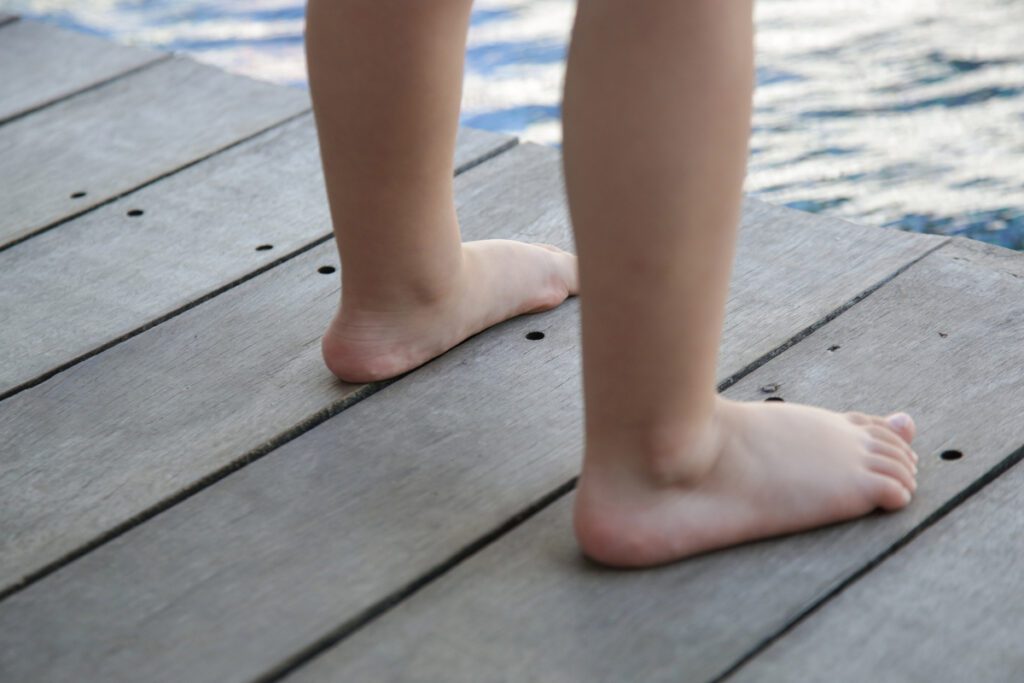
Flat feet is a common problem that can affect both children and adults. In this article we will discuss the causes, symptoms, treatment methods and ways to prevent flat feet. We invite you to read more!
What is flat feet?
Pes planus, or flat feet, is a deformity of the foot that involves a lowering of the foot’s vault. Flat feet can occur in different age groups, both in children and adults. In the following article, we will discuss the different types of flat feet and compare congenital and acquired flat feet.
Flat feet: definition and types
Flatfoot is a deformity of the foot that manifests itself as a lowering of its vault. There are several types, such as congenital flatfoot, acquired flatfoot, longitudinal flatfoot and transverse flatfoot. Each of these types has its own specific characteristics, which we will discuss below.
Congenital versus acquired flat feet
Congenital flatfoot is a foot deformity that occurs from birth. It is a rare occurrence that can be caused by abnormal development of the bones of the foot during the prenatal period. Acquired flatfoot, on the other hand, is a deformity that occurs as a result of various factors, such as being overweight, weakening of the foot muscles or prolonged stress on the feet. The acquired condition is much more common than congenital.
Longitudinal and transverse flatfoot: differences and similarities
Longitudinal flatfoot is a lowering of the foot’s vault along its length, leading to a flattening of the foot. It is the most common type of flatfoot. Transverse flatfoot is a lowering of the foot’s vault in its width, making the foot wider. Transverse flatfoot is less common than longitudinal flatfoot.
The similarity between longitudinal and transverse flatfoot is that both types of deformity lead to a lowering of the foot’s vault. The difference, however, is the direction of this lowering – with longitudinal flatfoot, the lowering is in the length of the foot, while with transverse flatfoot, the lowering is in the width of the foot.
Diagnosis of flat feet
The process of diagnosing flatfoot involves several steps to accurately diagnose the condition. Depending on the age of the patient, the methods of diagnosis may vary slightly. In the rest of this article, we will discuss how to diagnose flat feet in adults and children.
Flat feet in a child: what to pay attention to?
If a child is diagnosed with flat feet, attention should be paid to the way he or she walks and any balance problems. Children’s flat feet often manifest as physiological flat feet in children, which usually resolve on their own as the child grows and develops. However, if symptoms persist, it is worth consulting a doctor or physiotherapist.
Diagnosis of flat feet: examination with a physiotherapist and x-ray of the foot
In order to accurately diagnose flat feet, both in adults and children, an examination with a physical therapist is recommended. The specialist will assess the shape of the foot, the way you walk and any balance problems. In some cases, additional tests may be necessary, such as an x-ray of the foot to assess the bone structure of the foot and the degree of lowering of the vault.
Diagnosis is key to choosing the appropriate treatment and therapy. Depending on the type of condition and the age of the patient, a doctor or physiotherapist will select an individualized treatment plan, which may include exercise, massage, the use of orthoses or even surgical treatment.
Causes and effects of flat feet
The causes and effects are closely related. It is useful to understand what can lead to this condition and what problems may be associated with it. In the following article, we will discuss the causes of flat feet in adults and children, as well as the effects, such as foot pain.
Causes of flat feet in adults and children
The causes of flat feet in adults can be varied. Often these are genetic factors, being overweight, prolonged stress on the feet, wearing inappropriate footwear or injuries. As for the causes of flat feet in children, it is worth looking at factors such as postural defects, weakened foot muscles, abnormal foot development or overly rapid growth.
Effects of flat feet: foot pain and other problems
The effects can vary, but the most common problem is foot pain. Pain in flat feet can be caused by excessive stress on the joints, tendons and muscles of the foot. Other effects of flat feet include fatigue, a feeling of heaviness, balance problems or difficulty walking. In the long term, flat feet can lead to foot deformity, pain in the knee, hip or spine joints.
Flat feet and valgus: the relationship between these conditions
Longitudinal flatfoot and valgus are often related conditions. People with longitudinal flatfoot may also have flat-footed valgus, meaning that their feet are both flattened and turned outward. The valgus condition may be the result of abnormal foot loading caused by flat feet. If this is the case, treatment should include both flatfoot therapy and valgus correction.
Treatment and therapy of flat feet
Treatment and therapy for flat feet are key to improving the lives of those affected by the condition. Depending on the age of the patient and the severity of flat feet, different treatment methods are used. In the rest of this article, we will discuss treatment methods for flat feet in adults, flatfoot exercises for children and adults, and when surgical treatment for flat feet is necessary.
Treatment methods in adults
Treatment methods for adult flat feet primarily include conservative therapy to reduce pain and improve foot function. Among the most popular methods of treating flat feet in adults are:
- Orthoses and orthotics – individually tailored to the patient’s foot, designed to support the foot arch and evenly distribute pressure on the foot.
- Physiotherapy – exercises to strengthen the muscles of the foot and improve its flexibility.
- Massage – can help reduce muscle tension and improve circulation in the foot.
- Wearing appropriate footwear – footwear should be comfortable, stable and well-fitted to the foot.
Exercise therapy for children and adults
Exercises for flat feet are an important part of therapy for both children and adults. Regular exercise can help strengthen foot muscles, improve flexibility and reduce pain. Examples of exercises for flat feet in children and adults include:
- Picking up objects with the toes – the exercise involves grasping small objects, such as blocks or balls, with the toes.
- Walking on the toes and on the heels – the exercise strengthens the muscles of the foot and improves its flexibility.
- Moving a towel on the floor with the toes – the exercise engages the muscles of the foot and improves coordination.
- Stretching the Achilles tendon – the exercise involves leaning against a wall and gently moving one leg backward until tension is felt in the Achilles tendon.
Operative treatment of flat feet: when is it necessary?
Surgical treatment of flat feet is used only in cases where conservative therapy is unsuccessful or when the flat foot is very advanced and causes significant problems in the patient’s functioning. The decision on the need for surgery is made by an orthopedic surgeon after a thorough examination of the patient and an assessment of the severity of the condition. The surgery may involve correction of the foot deformity, joint stabilization or reconstruction of the foot arch.
In summary, treatment and therapy of flat feet are key to improving the quality of life of those affected by the condition. Depending on the age of the patient and the severity of the flat feet, different treatment methods are used, such as flatfoot exercises, orthotics or surgical treatment. It is important that treatment is individually tailored to the patient’s needs and carried out under the supervision of a specialist.
Prevention of flat feet
Flat feet in adulthood: practical advice
Prevention of pes planus in adulthood is mainly based on taking care of the feet and performing appropriate exercises. Here are some practical tips to help avoid this condition
- Wearing appropriate footwear – footwear should be comfortable, stable and well-fitted to the foot.
- Performing exercises that strengthen the muscles of the foot and improve its flexibility.
- Avoiding prolonged standing or sitting in one position.
- Massaging the feet regularly to reduce muscle tension and improve circulation.
How to prevent flat feet in children?
Preventing flat feet in children is extremely important, as early action can prevent the condition from developing in the future. Here are some tips on how to take care of children’s feet to avoid flat feet:
- Using appropriate footwear – children’s footwear should be comfortable, stable and well-fitted to the foot.
- Introducing exercises to strengthen the muscles of the foot and improve its flexibility.
- Avoiding prolonged sitting in one position, such as when watching TV or using a computer.
- Regular monitoring of the child’s foot development by a pediatrician or orthopedist.
Proper development of children’s feet: how to take care of the feet of the youngest?
Proper development of a child’s feet is key to avoiding flatfoot problems. Here are some tips on how to take care of your child’s feet and support the development of children’s feet:
- Use appropriate footwear – Children’s footwear should be comfortable, stable and well-fitted to the foot. Avoid shoes with hard soles, which can hinder the proper development of the foot.
- Introduce exercises to strengthen the child’s foot muscles and improve its flexibility. Exercises such as walking on tiptoe or lifting objects with the toes can be a great way to develop foot muscles.
- Allow your child to walk barefoot when possible – walking barefoot on soft ground, such as grass or sand, can promote proper foot development.
- Have your child’s foot development regularly checked by a pediatrician or orthopedist. Early detection of flatfoot problems can facilitate the introduction of appropriate therapy.
Minimalist footwear as support and solution for flat feet
As we mentioned, footwear is very important in the fight against flat feet. What if we told you that there is an ideal footwear for both adults and children that helps reduce the effects or (in the case of a lesser degree of the condition) even eliminate flat feet altogether?
One of the myths that has grown up around minimalist footwear is that the lack of sole support is harmful to people with flat feet. This is completely untrue, because such shoes PROMOTE proper foot movement, and even force it. This means that over time (by maintaining proper recommendations and training the foot) we can restore better shape in the foot and reduce deformities.
In the case of a child, where the foot is developing all the time, it is worth paying particularly close attention to footwear. Tight, ill-fitting or poor-quality shoes all affect the development of the foot. Special minimalist shoes from the very beginning force the foot to move properly while protecting it, making the foot strong and correctly placed.
For children, we recommend shoes for all seasons that protect and give freedom – you can find them in the children’s section.
Adults will find men’s and women’s shoes in many sizes and for different occasions and seasons.




Leave a Reply